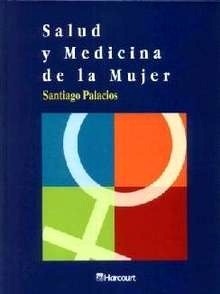Reseña o resumen
A blend of science theory and biomedical science practice make this series ideal for those seeking both the knowledge and skills to become proficient Biomedical Scientists.
Case studies enrich the text and emphasise clinical relevance
Self-test and discussion questions, with answers provided online, encourage students to analyze the text and develop their problem solving skills
The book is augmented by an Online Resource Centre, which includes an interactive digital microscope, video interviews with practicing biomedical scientists, and 'in the lab' footage showing biomedical science in practice
New to this Edition:
An extensive revision with the addition of seven new chapters
A greater focus on molecular diagnostics sees three chapters dedicated to this subject, including a new chapter focusing on in situ hybridization
Expanded coverage of pre-analytical procedures includes new coverage of data recording, and new chapters on Mohs procedures and histological artefacts
Refined coverage of microscopy includes more of a focus on digital pathology
A new chapter on post analytical procedures including histological reporting
Additional case studies throughout illustrate more fully the nature of histopathology in practice
Biomedical scientists are the foundation of modern healthcare, from cancer screening to diagnosing HIV, from blood transfusion for surgery to food poisoning and infection control. Without biomedical scientists the diagnosis of disease, the evaluation of the effectiveness of treatment, and research into the causes and cures of disease would not be possible.
The Fundamentals of Biomedical Science series has been written to reflect the challenges of practicing biomedical science today. It draws together essential basic science with insights into laboratory practice to show how an understanding of the biology of disease is coupled to the analytical approaches that lead to diagnosis. Assuming only a minimum of prior knowledge, the series reviews the full range of disciplines to which a Biomedical Scientist may be exposed from microbiology to cytopathology to transfusion science.
Histopathology describes the processes and practices that are central to the role of the histopathology biomedical scientist, from presampling to diagnosis to laboratory management. It demonstrates throughout how an understanding of cell and tissue physiology is vital to the successful identification of clinical conditions.
Table of Contents
1: What is histopathology?, Dr Guy Orchard, Mr David Muskett, Dr Anne Warren
2: Fixation and specimen handling, Mr David Muskett
3: Data recording and histopathology dissection, Ms Vanda McTaggart, Dr Sue Pritchard, Dr Anne Warren
4: Routine staining, processing and embedding, Mr David Muskett
5: Special stains, Mr David Muskett and Dr Guy Orchard
6: Artefacts, Dr Guy Orchard , Mrs Chantell Hodgson, Mr Brian Nation
7: Mohs procedures, Dr Guy Orchard and Mr Mohammad Shams
8: Immunocytochemical techniques, Dr Merdol Ibrahim and Dr Guy Orchard
9: Analytical immunocytochemistry, Mr David Muskett, Dr Guy Orchard, Dr Anne Warren
10: In situ hybridization: concepts and applications, Dr Tony Warford and Dr Emanuela Volpi
11: Molecular diagnostics: techniques and applications, Mr Brendan O'Sullivan and Dr Phillipe Taniere
12: Molecular diagnostics in action, Dr Phillipe Taniere
13: Histopathology reporting, Dr Guy Orchard and Dr Sue Pritchard
14: Microscopy and digital pathology, Dr Guy Orchard
15: Electron microscopy in diagnosis, Prof David Furness
16: Mortuary practice, Ms Ishbel Gall and Dr Mike Osborne
17: Essentials of laboratory management, Ms Sue Alexandra and Ms Patricia Fernando

